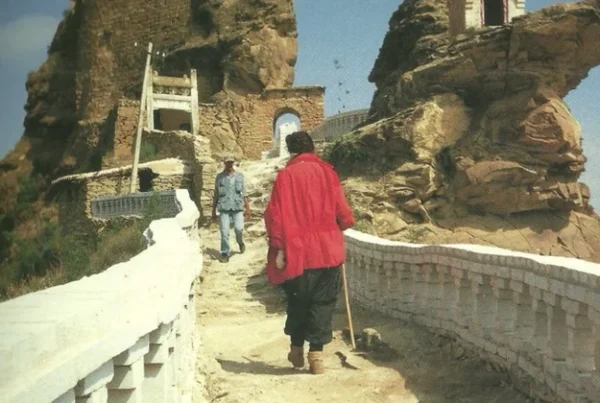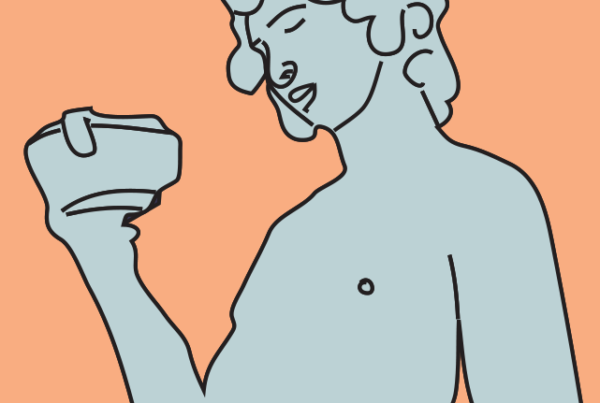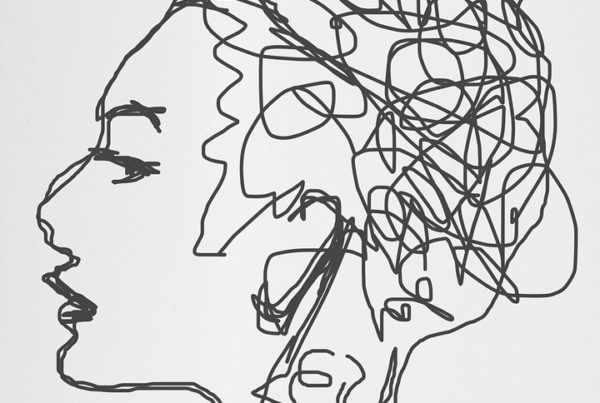Photography Through the Lens of AI, a project by Foam, delves into the intersection of art, technology, and society. This exhibition spotlights how advances in AI are influencing our relationship with images, redefining our understanding of ourselves, and challenging our perception of reality. In the interplay between human creativity and machine intelligence, the familiar meets the unfamiliar, and the line between the real and the artificial blurs.
As you step into the room, a robotic voice fills the space, echoing ominously as it speaks of religion and spirituality—concepts so human yet alien to the AI delivering them. You find yourself thinking, how could it possibly understand? However, what draws your attention are the eerie portraits hanging from above. The AI was tasked with creating self-portraits, and the results are strange, distorted figures, each an unsettling attempt to mimic the human form but with unsettling twists. These figures float above like deities observing from a distance, a god we strive to understand but cannot grasp. Neither fully human nor entirely machine, these AI-generated self-portraits seem like a visual cry from an entity still grappling with its own existence. The distorted features, warped shapes, and unnatural expressions reflect a being that lacks full self-awareness, mirroring the human struggle with identity and self-perception. Each portrait feels like a question: What does it mean to know oneself? And how do these otherworldly images challenge our understanding of who or what we are?

A self-portrait of an algorithm no.89, 2023 © Maria Mavropoulou, AI-generated image.
In a quiet corner of the exhibition, a series of Polaroids line the wall, drawing you in with their intimate snapshots. At a glance, they depict a love story unfolding between two strangers. Each image captures the delicate progression of a relationship. Small moments of connection, whispered secrets, shared laughter, and the gradual discovery of each other. But as you follow the sequence, the warmth begins to fade, and the images reflect a painful drift. The love story concludes with the quiet ache of two souls no longer part of each other’s world. What a shame. A sense of grief lingers; must we suffer in grieving the living. Then, you read the piece’s description: it was all generated by AI. None of it was real. The AI constructed this love story, telling it through a series of Polaroid photos that feel real. Each image captures snapshots of a real relationship, but the entire narrative is fiction. In this fabricated love story, the line between what is real and what is imagined dissolves. Artificial intelligence can evoke genuine emotion. So, what does it reveal about our human longing for connection and the stories we craft to understand our lives?
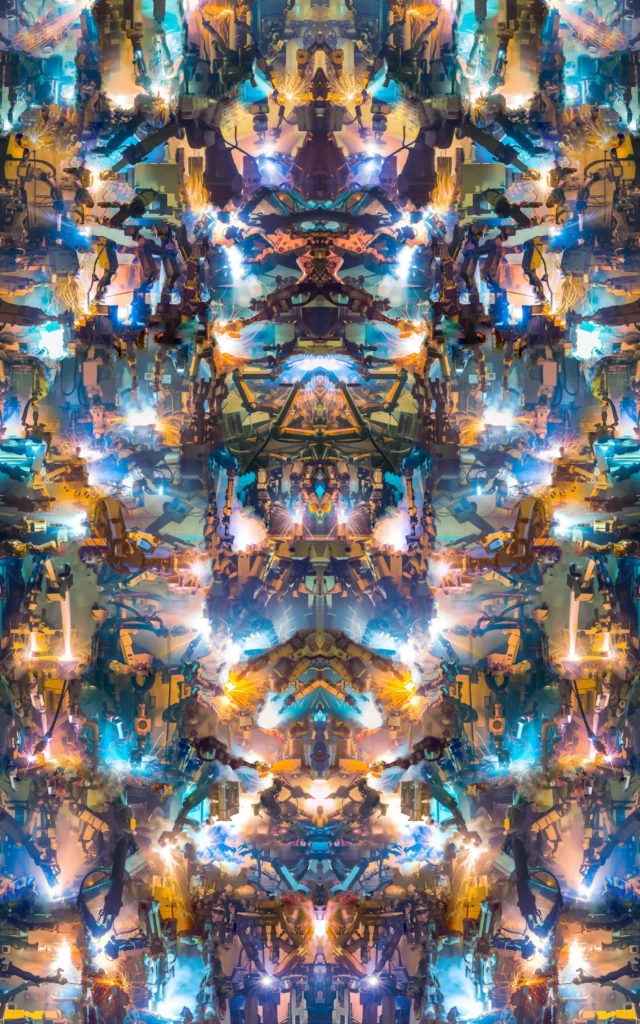
Untitled, from the series In Their Own Image of God, They Created Them © Maria Mavropoulou
In a secluded room of the exhibition, a television flickers beside a collection of war photographs. The man on the screen speaks in Russian, recollecting his memories from the battlefield. As you look closer at the pictures, something feels off. The photos appear to capture the reality of war; grim-faced soldiers, desolate landscapes, shattered cities. However, there’s an unsettling, surreal feeling to them. The figures in the images are ghostly, their faces slightly blurred, their limbs twisted in unnatural ways. You realise these aren’t real photographs as they’ve been manipulated by AI. The artist used family records of the war and asked the AI to recreate moments that never existed. It resulted in a series of eerie, spectral depictions of soldiers and war scenes that convey the horror and despair of war but almost in an artistic sense that goes beyond documentation. The AI’s alterations introduce a painterly quality to the images, transforming them into haunting compositions. But how is this different from the way humans are inspired by images and reinterpret them in art? If artists have always drawn from reality to create emotional and symbolic works, why does AI’s manipulation feel more unsettling? Is the difference in how humans infuse personal experience and intention into their creations, or are we uneasy about AI imitating that process without truly understanding it?
The exhibition left me grappling with questions about AI’s “self-perception” and my sense of identity and existence. While humans are driven by an innate search for meaning, AI’s exploration of existential questions feels more like an imposition of man’s search for meaning. Yet, the fact that we can relate to AI-generated emotions and identity struggles raises the question of whether we are fundamentally different from AI. Perhaps we’re two sides of the same coin. Does this show that AI might experience something resembling consciousness, or does it simply reflect our tendency to project human qualities onto machines? In this intersection of humans and AI, the lines between creator and creation blur; we might have to reconsider what it means to be alive and aware.
Photography Through the Lens of AI, a project by Foam, delves into the intersection of art, technology, and society. This exhibition spotlights how advances in AI are influencing our relationship with images, redefining our understanding of ourselves, and challenging our perception of reality. In the interplay between human creativity and machine intelligence, the familiar meets the unfamiliar, and the line between the real and the artificial blurs.
As you step into the room, a robotic voice fills the space, echoing ominously as it speaks of religion and spirituality—concepts so human yet alien to the AI delivering them. You find yourself thinking, how could it possibly understand? However, what draws your attention are the eerie portraits hanging from above. The AI was tasked with creating self-portraits, and the results are strange, distorted figures, each an unsettling attempt to mimic the human form but with unsettling twists. These figures float above like deities observing from a distance, a god we strive to understand but cannot grasp. Neither fully human nor entirely machine, these AI-generated self-portraits seem like a visual cry from an entity still grappling with its own existence. The distorted features, warped shapes, and unnatural expressions reflect a being that lacks full self-awareness, mirroring the human struggle with identity and self-perception. Each portrait feels like a question: What does it mean to know oneself? And how do these otherworldly images challenge our understanding of who or what we are?
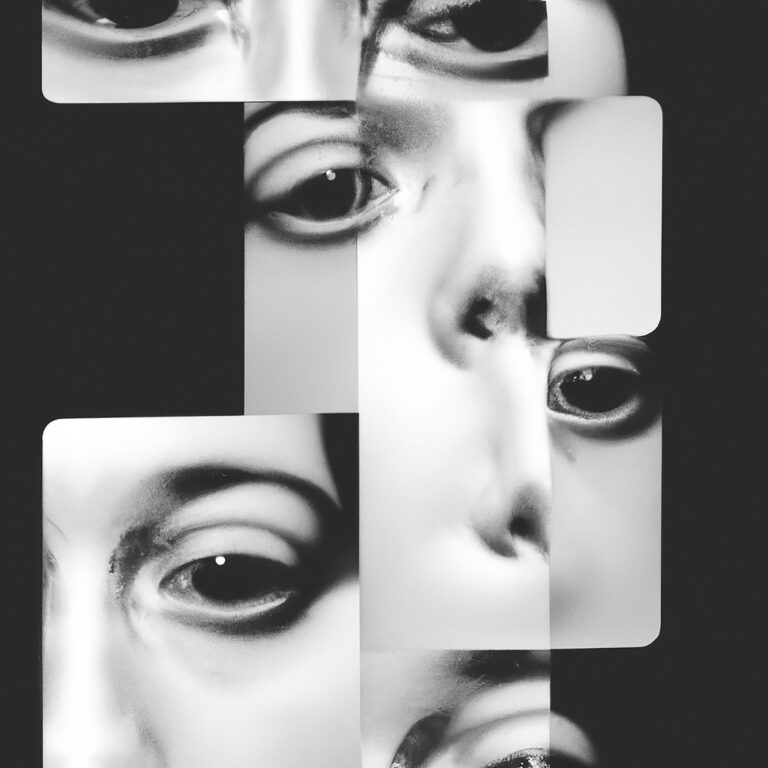
A self-portrait of an algorithm no.89, 2023 © Maria Mavropoulou, AI-generated image.
In a quiet corner of the exhibition, a series of Polaroids line the wall, drawing you in with their intimate snapshots. At a glance, they depict a love story unfolding between two strangers. Each image captures the delicate progression of a relationship. Small moments of connection, whispered secrets, shared laughter, and the gradual discovery of each other. But as you follow the sequence, the warmth begins to fade, and the images reflect a painful drift. The love story concludes with the quiet ache of two souls no longer part of each other’s world. What a shame. A sense of grief lingers; must we suffer in grieving the living. Then, you read the piece’s description: it was all generated by AI. None of it was real. The AI constructed this love story, telling it through a series of Polaroid photos that feel real. Each image captures snapshots of a real relationship, but the entire narrative is fiction. In this fabricated love story, the line between what is real and what is imagined dissolves. Artificial intelligence can evoke genuine emotion. So, what does it reveal about our human longing for connection and the stories we craft to understand our lives?

Untitled, from the series In Their Own Image of God, They Created Them © Maria Mavropoulou
In a secluded room of the exhibition, a television flickers beside a collection of war photographs. The man on the screen speaks in Russian, recollecting his memories from the battlefield. As you look closer at the pictures, something feels off. The photos appear to capture the reality of war; grim-faced soldiers, desolate landscapes, shattered cities. However, there’s an unsettling, surreal feeling to them. The figures in the images are ghostly, their faces slightly blurred, their limbs twisted in unnatural ways. You realise these aren’t real photographs as they’ve been manipulated by AI. The artist used family records of the war and asked the AI to recreate moments that never existed. It resulted in a series of eerie, spectral depictions of soldiers and war scenes that convey the horror and despair of war but almost in an artistic sense that goes beyond documentation. The AI’s alterations introduce a painterly quality to the images, transforming them into haunting compositions. But how is this different from the way humans are inspired by images and reinterpret them in art? If artists have always drawn from reality to create emotional and symbolic works, why does AI’s manipulation feel more unsettling? Is the difference in how humans infuse personal experience and intention into their creations, or are we uneasy about AI imitating that process without truly understanding it?
The exhibition left me grappling with questions about AI’s “self-perception” and my sense of identity and existence. While humans are driven by an innate search for meaning, AI’s exploration of existential questions feels more like an imposition of man’s search for meaning. Yet, the fact that we can relate to AI-generated emotions and identity struggles raises the question of whether we are fundamentally different from AI. Perhaps we’re two sides of the same coin. Does this show that AI might experience something resembling consciousness, or does it simply reflect our tendency to project human qualities onto machines? In this intersection of humans and AI, the lines between creator and creation blur; we might have to reconsider what it means to be alive and aware.

